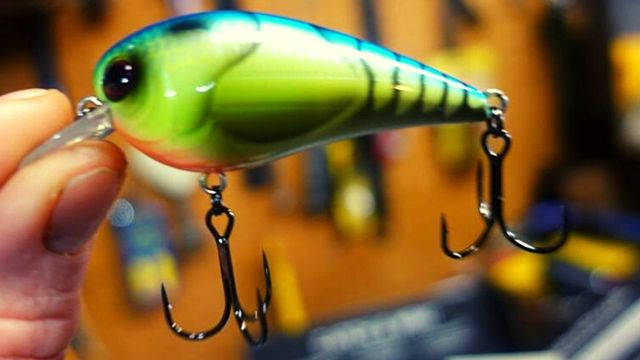
Fall Cranking Tips: How To Use Crankbaits For Fall Bass
The air and water temperature is cooling down. Schools of baitfish are everywhere. Leaves are starting to fall and bass are on the move. It’s a perfect time for throwing a fast-moving lure, but which one works best during this season? While many anglers throw spinnerbaits and buzz baits for bass in the fall, there are others who would rather crank the ultimate shad imitator—a crankbait.
The fish are feeding up for the winter and are looking for schools of shad to feed on, so a crankbait offers bass a lure that looks like a shad but is just a little bigger or has something a little different than what they are used to seeing.
A change in diet later in the fall also makes a crankbait more effective than a spinnerbait because bass start feeding on crawfish then. So use shad-color crankbaits in early to mid-autumn but switch to crawfish-color crankbaits for late fall. When the sun heats up the rocks in late fall the crawdads start moving a little bit and bass move ultra-shallow.
Bass migrate from deep to shallow water in the early stages of autumn and then back to the deep again by early winter. So crankbaits become effective lures during this season because anglers can fish these baits at various depths.
Let’s look at some of the cranking techniques you can use to catch bass in the fall.
Crankbaits for Fall Bass: Deep to Shallow
In the early fall when the water temperature still hovers in the 70- to 80-degree range, try probing brush piles with deep-diving crankbaits you can run 12 to 15 feet deep into brush piles close to drop-offs. Crank the lure down into the piles and then just work it as slow as you would a worm or jig through the brush.
Cranking is an effective way to catch bass as you follow the bass’ fall migration route into the creeks and coves and later to the rocky 45-degree banks. Throughout the fall, keep tabs on the baitfish to find bass and if you don’t see any shad keep moving until you find the forage.
When the fish are in the creeks and coves, concentrate on depths of 1 to 5 feet and select small medium-diving crankbaits even though these lures dive deeper than the larger square-billed crankbaits. The smaller crankbaits match the size of shad then and will allow you to catch more bass than the big square bills.
Shad-pattern hues such as Tennessee shad and baby threadfin shad (blue back and pearl sides) work best for bass feeding in the creeks and coves. Retrieve the lures at a fast clip but mix things up with a stop-and-go presentation.
In the late fall, you should move to the rocky 45-degree banks and eventually to points where you can throw Bomber Model 6A or Storm Lure Wiggle Wart crankbaits (to name a couple) in crawfish hues (dark brown). On cloudy days, select crankbaits for fall bass in a chartreuse baby bass color.
When the water temperature dips to around the 50-degree mark, slow down your retrieve considerably and if the temperature drops below 50 crawl the lure along the bottom so the crankbait grinds into the rocks. On sunny days in late fall, you can catch bass on the crawfish crankbaits close to the bank.
Crankbaits For Fall Bass: Staying Shallow
If deep-diving crankbaits are too much work for you to throw all day, you can concentrate on shallow bass in the upper ends of reservoirs throughout the fall. Even when the water temperature stays in the 75- to 80-degree range in early autumn, you can throw shallow-running square-bill crankbaits to catch bass that are chasing shad on flats near a channel. Bass will remain shallow there as long as the water stays above 60 degrees.
Selecting large square bills will usually match the size of the shad in these areas. The best colors for square bills are Tennessee shad or black back and chartreuse sides.
A rocky channel bank next to a flat with laydown logs is an ideal spot to throw square-bill crankbaits for fall bass. Key on the rocks in the morning and then target the laydowns in the afternoon. When fishing the flats, look for the shad and any piece of cover sticking out of the water.
Crankbaits For Fall Bass Retrieve Speed
Vary your retrieve depending on the mood of the fish. Start out winding it as fast as you can, then adjust speeds until you find out how bass want it presented. Steadily wind in the lure until it hits a rock or log and then pause it for just a second. Throwing crankbaits for fall bass is a process, so it will take some experimentation.
As the water gets colder later in the fall, crank the lure slower and scale down to a smaller square bill. Bass move off the flats and laydowns then, and stay strictly on the rocks of the channel bank.
Updated November 3rd, 2021 at 4:44 AM CT
